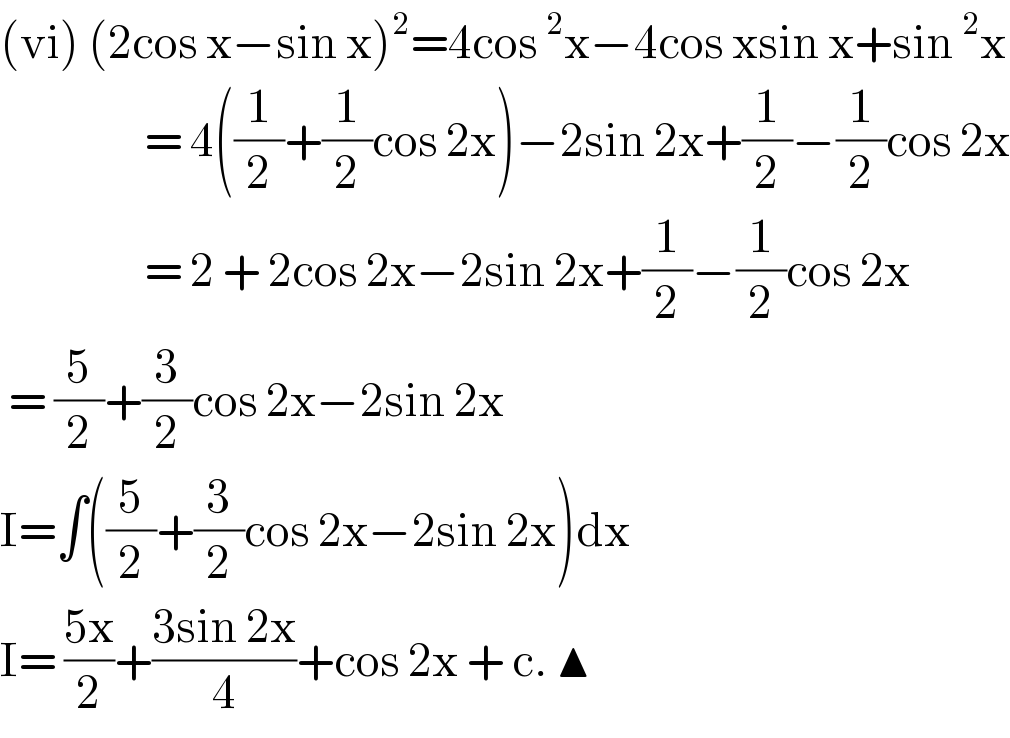
Question and Answers Forum
Question Number 121887 by oustmuchiya@gmail.com last updated on 12/Nov/20

Commented by liberty last updated on 12/Nov/20

Commented by bemath last updated on 12/Nov/20
![(vii) ((2x+4)/((x+1)(x−2))) = (p/(x+1)) + (q/(x−2)) → { ((p = [((2x+4)/(x−2)) ]_(x = −1) = −(2/3))),((q = [ ((2x+4)/(x+1)) ]_(x = 2) = (8/3))) :} I = ∫ (8/(3(x−2))) − (2/(3(x+1))) dx I = (8/3) ln ∣x−2∣ − (2/3)ln ∣x+1∣ + c I = (2/3)ln((((x−2)^4 )/(∣x+1∣)) ) + c . ⧫](Q121895.png)
Answered by Dwaipayan Shikari last updated on 12/Nov/20
![∫_1 ^2 ((12x)/((9−2x^2 )^2 ))dx (9−2x^2 =t⇒−4x=(dt/dx) =3∫_1 ^7 (dt/t^2 )=[−(3/t)]_1 ^7 =−(3/7)+3=((18)/7)](Q121927.png)
Answered by mathmax by abdo last updated on 12/Nov/20
![y=(1/(9−2x^2 )) ⇒y^′ =−((−4x)/((9−2x^2 )^2 )) =((4x)/((9−2x^2 )^2 )) ⇒ ∫_1 ^2 ((12xdx)/((9−2x^2 )^2 )) =3 ∫_1 ^2 ((4x)/((9−2x^2 )^2 ))dx =3[(1/(9−2x^2 ))]_1 ^2 =3{1−(1/7)} =3.(6/7) =((18)/7)](Q121945.png)
